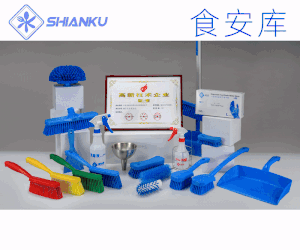食品伙伴網(wǎng)訊 據(jù)歐盟食品安全局(EFSA)消息,歐盟食品安全局就一種脯氨酸特異性寡肽酶((Tolerase®G))作為新食品原料的安全性發(fā)布意見。
這種脯氨酸特異性寡肽酶是利用轉(zhuǎn)基因黑曲霉自克隆株產(chǎn)生的脯氨酸寡肽酶制劑。歐盟食品安全局專家組對(duì)這種脯氨酸特異性寡肽酶的安全性進(jìn)行了評(píng)估。專家組經(jīng)過評(píng)估認(rèn)為,脯氨酸特異性寡肽酶無遺傳毒性。它的目標(biāo)使用人群為一般成年人,預(yù)期最大使用量為每天2746 mg TOS/人或39.2 mg TOS/kg 體重(默認(rèn)一般成年人的體重為70KG)。
部分原文報(bào)道如下:
Following a request from the European Commission, the EFSA Panel on Dietetic Products, Nutrition and Allergies (NDA) was asked to deliver an opinion on proline-specific oligopeptidase (Tolerase G) as a novel food ingredient submitted pursuant to Regulation (EC) No 258/97 of the European Parliament and of the Council, taking into account the comments and objections of a scientific nature raised by Member States. The novel food is an enzyme preparation of prolyl-oligopeptidase produced with a genetically modified Aspergillus niger self clone strain. The target population is the general adult population. The results from a bacterial reverse mutation test and of an in vitro chromosome aberration test did not indicate genotoxicity. The Panel considers that the reported effects observed in a 90-day rat study are treatment-related effects and can be attributed to the higher energy consumption by these animals. Taking into account the intended maximum use level for Tolerase G, its daily consumption would correspond to 2,746 mg TOS/person or to 39.2 mg TOS/kg body weight (bw) per day, when considering a default body weight of 70 kg for an adult person. The margin between this value and the dose in the rats, which caused effects attributable to the excess energy intake, is approximately 45. Noting this margin, the Panel considers that it is unlikely that such effects would occur in human at the intended use levels. The Panel concludes that the NF, Tolerase G, is safe for the intended use at the intended use level.
原文鏈接:
http://www.efsa.europa.eu/en/efsajournal/pub/4681
相關(guān)政策解讀











 地區(qū):
地區(qū):






 魯公網(wǎng)安備 37060202000128號(hào)
魯公網(wǎng)安備 37060202000128號(hào)



